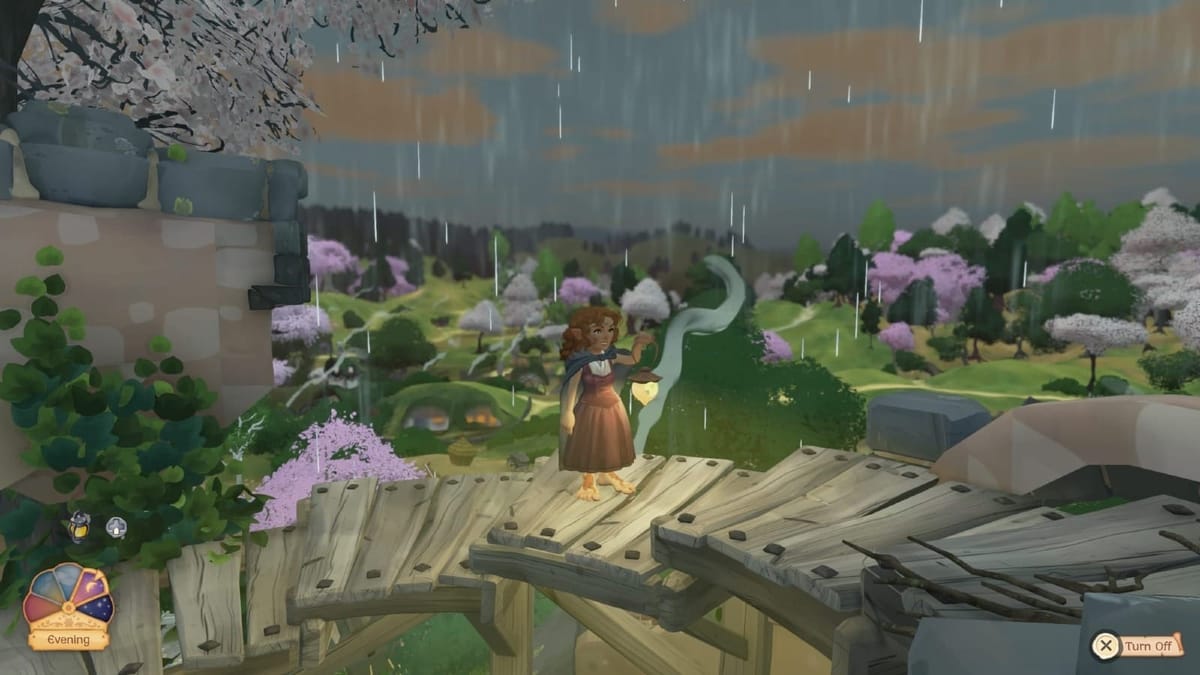
Rejoice, fellow Tolkeinites, for the time has finally come to live our Hobbit lives with Tales of the Shire! Coming to us courtesy of Weta Workshop, this life sim sees players set themselves up in the sleepy Shire village of Bywater during the interim period between the events of The Hobbit and The Lord of the Rings. There be no dragons nor rings of power here, but make no mistake, the life of a Hobbit is nevertheless filled with all manner of engaging activities. Second breakfasts take a lot of prep, after all.
We actually did some coverage of the game last year, with both Adam and Cassie exploring around Bywater in mini Hobbit adventures of their own; however, multiple delays did push its release date back quite considerably. These delays were, according to the developer, to refine the game and respond to player feedback, and despite making us wait that little bit longer, I’m happy to report that the decision has paid off in droves. One could not ask for a warmer and cozier hug from Middle-earth.
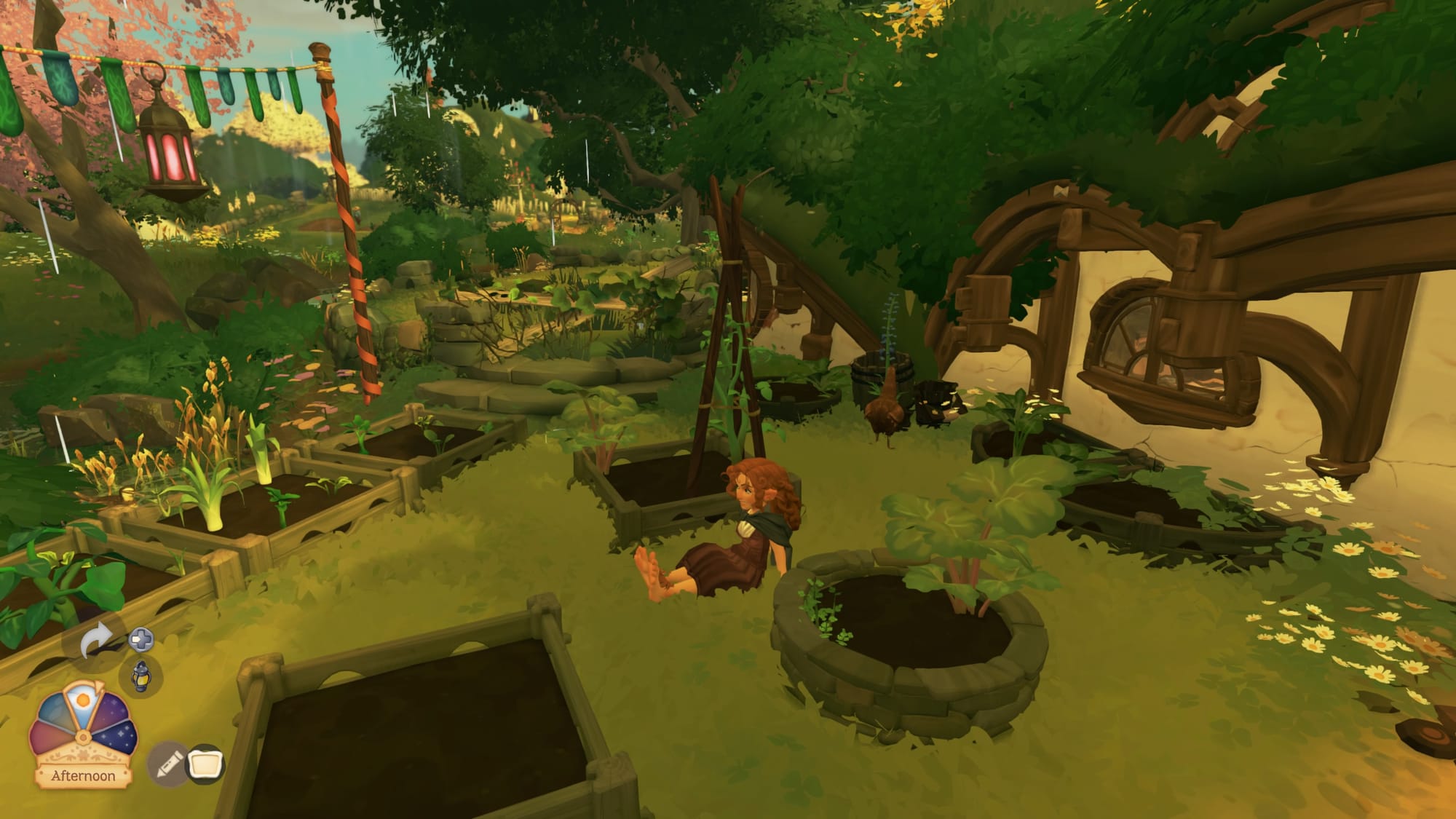
First, let’s quickly run through the narrative set-up. Travelling toward their new home, the player’s Hobbit takes a quick power nap just off the beaten path. Awoken by a mysterious stranger with a grey robe, large beard and wooden staff (hint, hint), he kindly offers you a lift in his cart. Arriving at Bywater, we say goodbye to the bearded stranger (I think he was called Grand-Elf or something) and begin familiarising ourselves with our new surroundings with the help of a lovely Hobbit chap named Orlo.
After sharing the first of what will become many meals with Orlo, you’re pretty much free to explore at your own whim. The narrative does expand, of course, with questlines popping up across Bywater that introduce the player to the various colourful characters that inhabit the village as well as the mechanics of the game itself. The main plot is split up into acts, with the first seeing the player ingratiating themselves with their new neighbors, but I wouldn’t dream of spoiling anything more than that.
What I will say, however, is that Tales of the Shire does an exceptional job of integrating tutorials into its narrative, intricately weaving explanations of gameplay mechanics into quests that drive the plot and are character-led. Nothing ever feels out of place or immersion-breaking, which is really quite impressive, especially considering the sheer amount of gameplay features on offer here.
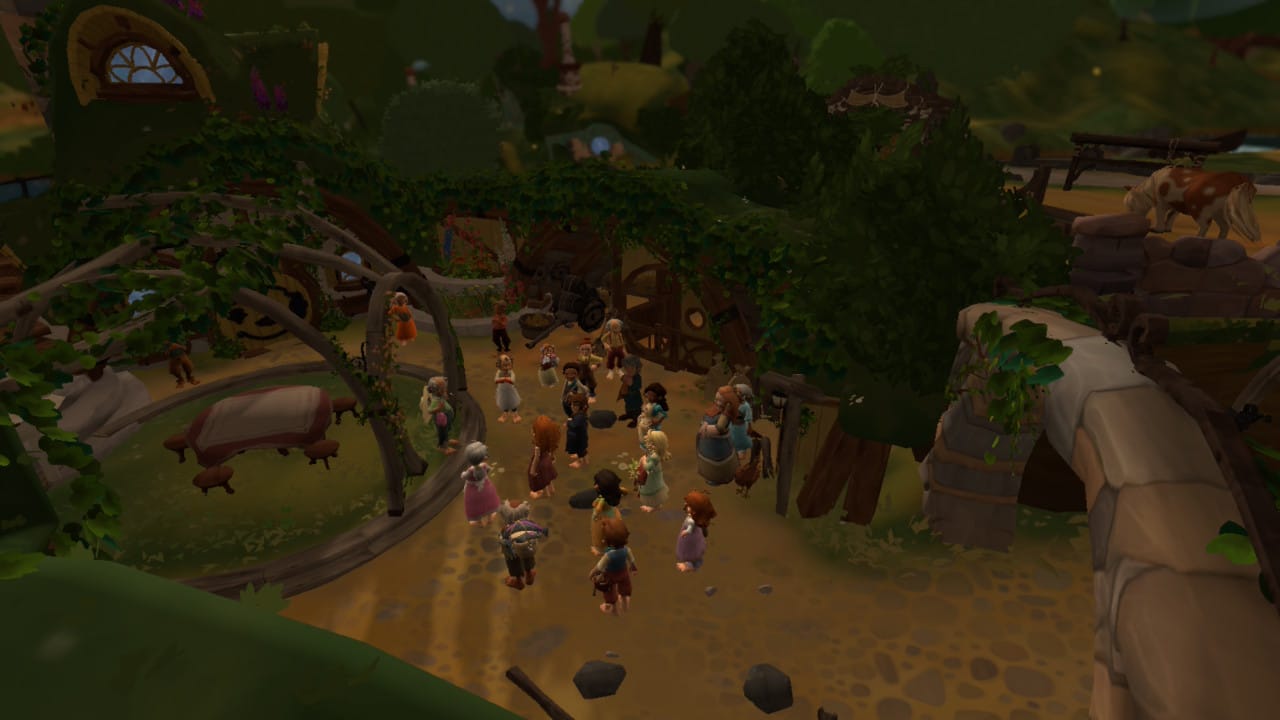
With that excellent segue, let’s discuss the various pastimes available to a resident of Bywater. Deep breath, everyone: cooking, gardening, fishing, foraging, decorating, trading, exploring, eating, and frolicking through meadows. It’s an extensive list, yes, but the game never once felt overwhelming or like I couldn’t keep up with it. Granted, the days tick by as you go about your business, and the seasons cycle every 14 in-game days, but it is designed in such a way as to not lump you with any external pressure. It is a cozy game indeed, and Hobbits do not complete tasks late, but precisely when they mean to.
Focusing in on the specifics, it is no secret that Hobbits love their food, and cooking is an activity that players will find themselves engaging in regularly. Now, in his hands-on preview, Adam already provided a great rundown of the mechanics of cooking, so I can just give an overview and how it shapes up in the full game. You cook dishes to serve at shared meals with the other Hobbits of Bywater. You cook these dishes using an array of ingredients, seasonings and cooking utensils, attempting to make the most delicious meal that also satisfies your guests’ preferences. You see, Hobbits can and do crave certain dishes and flavours. Some of these cravings are locked and others are fleeting, affected by various factors like the specific season you’re currently in and even just how they’re feeling on the day of the meal.
Another layer to this is in the preparation of said dishes, where you can chop, fry, mix and season ingredients just the right amount in order to hit that delicious sweet spot. Also, you’ll very likely be cooking for many of your Hobbit neighbors at any one time, so variety is key here. It’s a surprisingly intricate and rewarding system, and my fiancée and I enjoyed discussing the perfect amount of chopping necessary to meet our guests’ standards. If I had one little niggle with the cooking mechanics, it would be the lack of detailed explanations as to the utensils required to change the properties of ingredients. You do not have access to every cooking utensil until you progress in the game, and many a meal was ruined in my attempts to crisp up my dishes, even though it required a mixing bowl that I had yet to have access to.
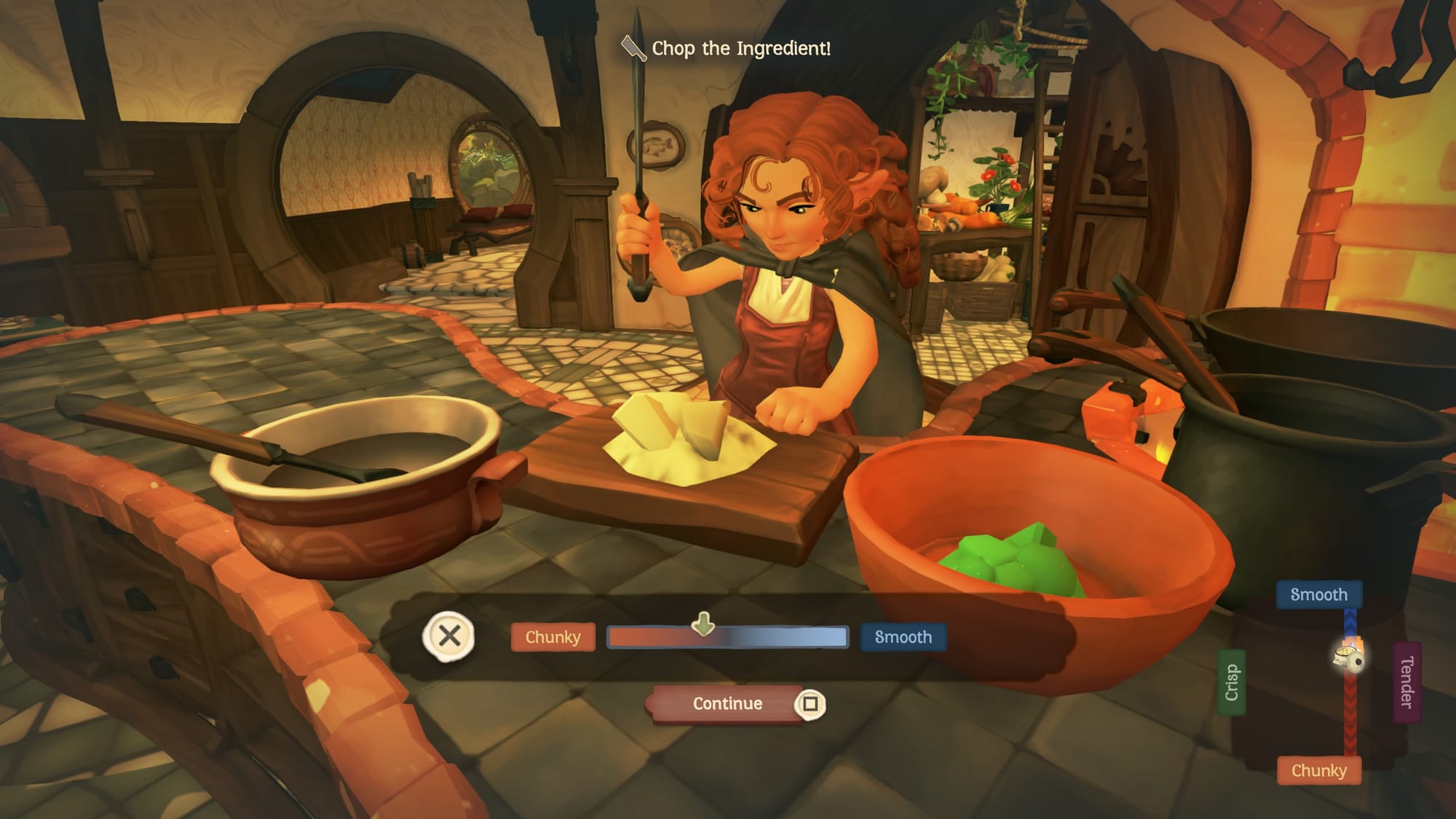
Another engaging activity for a resident of Bywater is gardening. Using planters located in the garden of your Hobbit-hole, you can plant seeds and nurture them to maturity with your trusty watering can. Time taken to reap what you sow varies with each seed, which also have their own preferences regarding seasons and even what is growing around them. These directly affect the quality of the produce, so if you need some po-tay-toes to boil, mash and stick in a stew, you’re best to plant them next to beans or eggplants, and avoid baby marrows like Mordor.
Fishing sees you casting your line into the nearest pond and waiting for a curious fishy to take an interest. When caught on the lure, a push-and-pull occurs with simple yet involved mechanics where you reel in the fish whilst keeping the line from snapping. Foraging can be done as you explore the surrounding countryside, with groups of butterflies leading you to plants and bushes ripe with ingredients begging to be picked.
Evidently, there is an abundance of things to keep a Hobbit busy in Tales of the Shire, all of which are fun, engaging and addictive to partake in. Additionally, the four main activities (cooking, gardening, fishing and foraging) all have corresponding clubs attached to them. After finding Hobbits to run them, such as Delphi for foraging and Old Noakes for fishing, players can earn even more rewards from missions related to or simply by engaging in these activities, leveling up said clubs and unlocking useful perks and upgrades such as extra cooking utensils, more garden space, better fishing rods and extra backpack space.
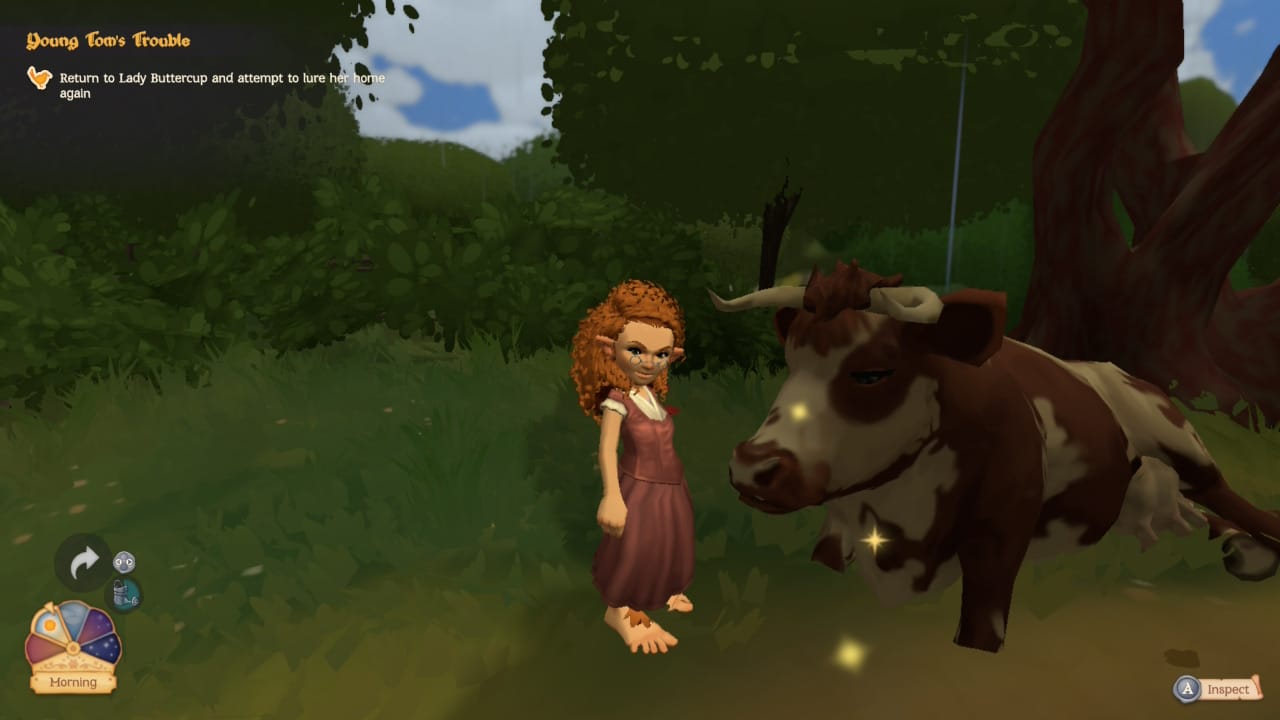
The core component of Tales of the Shire that feels integral to the gameplay loop is NPC relationships. Every other aspect of the game leads back to it in one way or another, and the developers have made sure you feel invested in each character you interact with. Each Hobbit you encounter is unique and characterful, from the rambunctious young yet strong Daisy Took and the affable yet slightly suspect salesman Hobson Hornblower to the Dwarven blacksmith Nefi and her little armoured duck companion Ladel.
Each named Hobbit has a relationship meter that can be raised through sharing meals with them. The more they enjoy the meals and whether their cravings are satisfied, the more experience you gain with them. Each level raised gives you gifts like rare ingredients or new recipes, and certain level milestones unlock access to relationship tales with even bigger rewards like new locations, trading opportunities, Hobbit-hole upgrades and more. One aspect I thought was quite ingenious here is the way that Hobbits get grumpy if you don’t invite them to share a meal for a few days, and even go as far as refusing to accept further invitations for a period of time. Since all characters have useful milestone upgrades locked behind their relationship levels, this incentivises players to spread their guest choices across all available Hobbits instead of grinding up just one or two.
This core loop is framed by a visually stunning art style. It has this adorable chibi-esque vibe that really synthesises with the quaint, cheerful and peaceful atmosphere of the game at large. On PS5, there were some noticeable drops in framerate on occasion, mainly when skipping around the Shire or when entering into the village square where a lot of the NPCs are. With the game taking up only just over 3GB of space, it makes me wonder why it's struggling, and makes me think that it could be an optimization issue. On the Nintendo Switch 2, performance was never an issue; graphically, however, the game could have been better. It was oftentimes difficult to see details of our surroundings due to low image quality. Regardless, it was far from a major issue and was mitigated quite successfully by the genuine charm of the visual style.
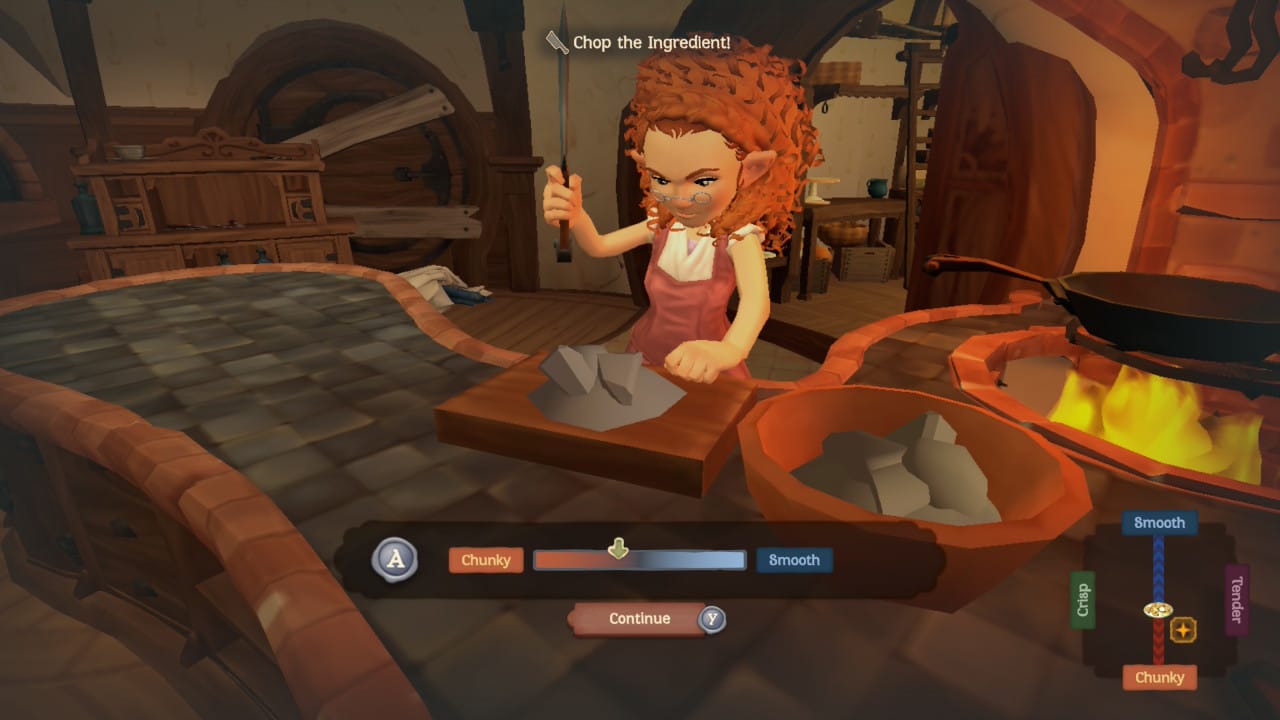
We’re this deep into the review, and I haven’t even managed to discuss the expansive amount of customization options available to players yet. Thankfully, Cassie already covered this pretty comprehensively in her preview, so make sure to check that out if you want a more detailed idea. What’s important to know is that Tales of the Shire doesn’t skimp on giving players options, with every room in your Hobbit-hole, its garden and even your own clothes and appearance allowing for extensive customization.
You don’t have access to every area of your house from the get-go, so players with an itchy trigger finger for interior design best hit up carpenter Willow Took and cook her some tasty meals. The reason for this is that, upon arrival, your Hobbit-hole is in dire need of some TLC, and with Willow being the resident woodworker, leveling up your relationship with her will see your house renovated and expanded.
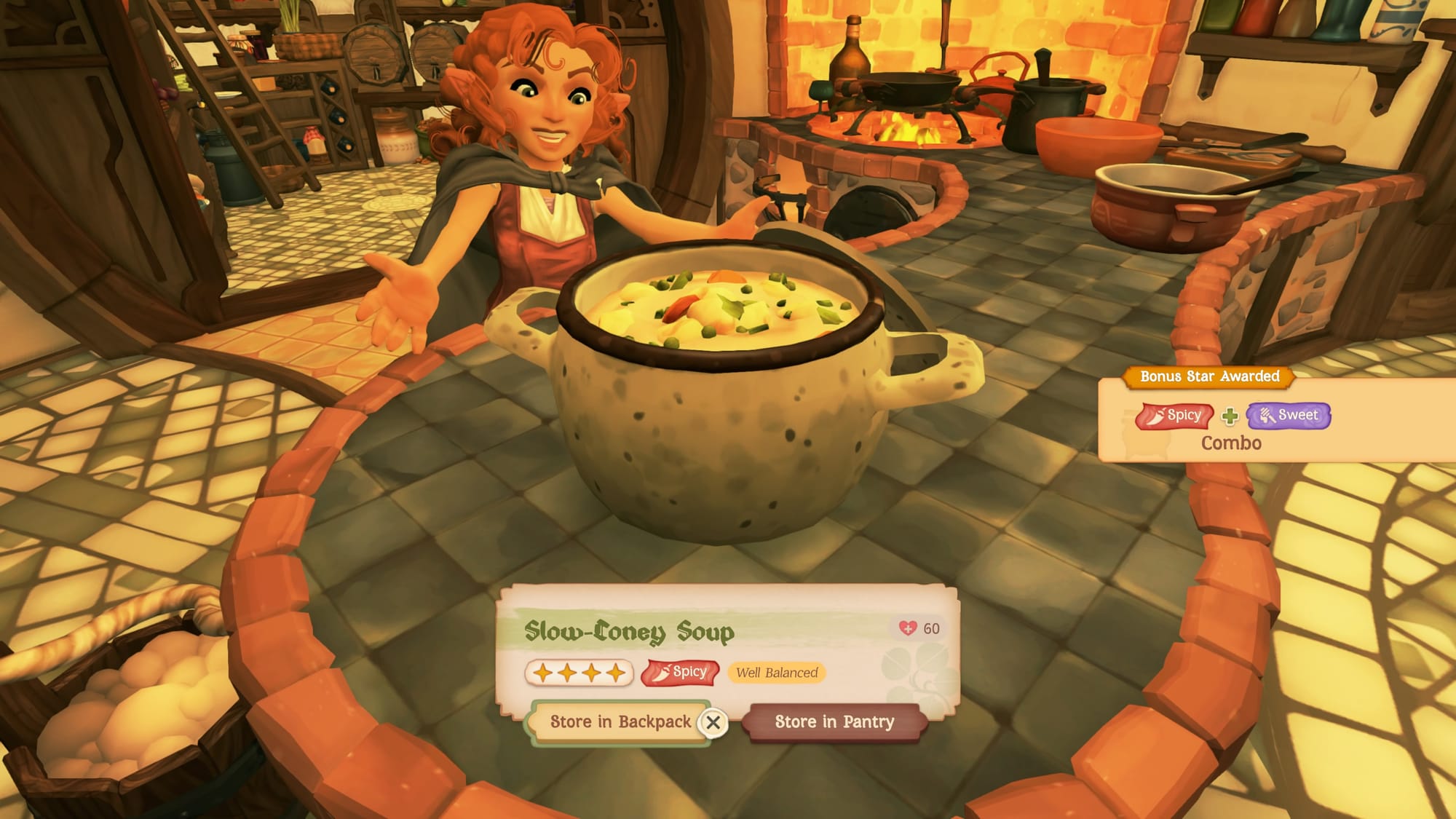
Whilst I don’t think you have to be a Tolkien enthusiast to enjoy the game, Tales of the Shire does contain some references to the wider legendarium that are really nice inclusions. One that made my fiancée and I audibly shout was when Rosie Cotton mentioned receiving letters from the GOAT Hobbit himself (stick it, Frodo), Samwise Gamgee. There are also, of course, established characters amongst the residents of Bywater, including the aforementioned Rosie and the fisherman Old Noakes.
I did run into a few glitches during my time in the Shire, although they were few and far between and did little to interrupt the flow of gameplay. The only one worth mentioning was a way into my journey when Delphinium Took sent me a letter of warm welcome to the village of Bywater, and included that I was more than free to come and chat with her whenever my schedule allowed. Whilst very nice, I had already shared many a meal with her and completed her relationship tales, so clearly I hadn’t made much of an impression. In all seriousness, it’s a small bug, but it did break the immersion somewhat in what is such a key aspect of this game.
Apart from a few niggles here and there, it is hard to find anything about the game that isn’t brilliantly engaging, warm and investing. It is absolutely fertile ground for future updates, and I can already imagine the different ways Weta Workshop could expand to what is already a fantastic experience.
Tales of the Shire: A Lord of the Rings Game
Excellent
In short, Tales of the Shire is a genuinely exceptional game. It is a cozy Hobbit life sim with unique characters, a quaint art style and gameplay mechanics that feel engaging, fun and sometimes surprisingly intricate. An absolute treat for all who partake, whether diehard fans of Tolkien or the cozy genre, or those with even a passing knowledge of either.
Pros
- A cute and quaint art style
- Gameplay that feels engaging, intricate and never like busy work
- Unique and colourful characters that you want to invest in
- Tutorials intricately woven into narrative and gameplay
- Extensive customization options for Hobbit hole and character appearance
- Nice nods to the wider Tolkien legendarium
Cons
- A lack of detailed explanation surrounding the cooking mechanic
- Framerate drops occasionally on PS5
- One instance of an immersion-breaking glitch
- Underwhelming graphics make seeing details difficult on NS2
This review is based on an early PS5 copy provided by the publisher. Tales of the Shire: A Lord of the Rings Game comes out on July 29, 2025.
